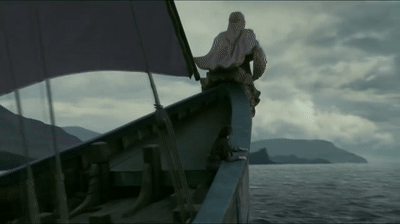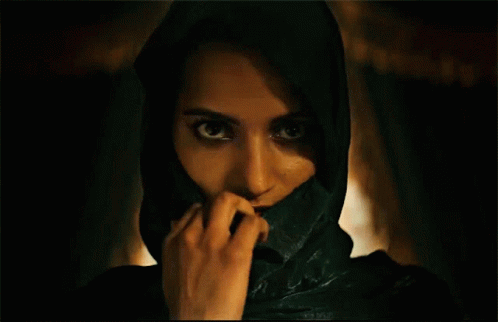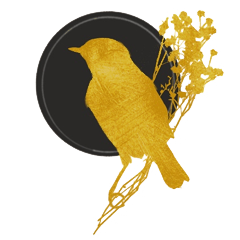Welcome to Part 2 of The North Star, my fake wip to demonstrate how to construct a story from scratch! This part is going to focus on character creation and the integration of theme.
Part 1 of this series revolved around the story’s setup and the first act: Mia’s ship has set sail and she’s on her way to retrieve the magical artifact for her boss, when she notices her brother, who is tired of living a sheltered life, has snuck onto the ship. After an antagonistic force spies the pair, she is unable to send her brother back home and decides to take him with her on this journey.
But why is Mia so protective of her brother?

Mia’s story
Alright, I want to keep this story simple. So: let’s say Mia made a promise to her dying mother. Not on her deathbed — this story is supposed to be generic but not that much — let’s say her mother was a traveling merchant, sailing the seas with her children. One day, their ship was ambushed by pirates. Mia’s mother hid her children away, telling Mia to keep her brother safe.
Now, put on the world’s tiniest violin in the background and crank that scene out, a single sentence to encompass all the emotion, a sentence that we can toss into our prose every now and then to remind the reader of the promise.
Imagine this: Mia cowers in her hiding spot, her arms slung around her brother’s tiny frame. She can hear screams coming from outside, the sound of the ship’s crew getting slaughtered. A dead body slumps against their hiding spot, blood trickles through a gap in the narrow door. Her brother is shaking. So is she. But there is a tiny hole in the wall, and she can just see the stars, and so Mia whispers something into her brother’s hear, something their mother always told them whenever they were lost at sea.
“Look at the stars and you will always find your way home.”
not perfect, but I’m not trying to be original right now.
You might even embellish this phrase by making the capital bright enough for Mia not to see the stars too often. Perhaps Ben hasn’t seen them in years. Now, back on the ship, their relationship begins to blossom once more.
Anchors
Now that I have a rough idea of Mia, her past and her relationship to her brother, let me think of some more important anchors that I can use to ground her personality. What I mean by this is that I need some points in her life that have shaped her apart from her mother’s death.
Example
Leigh Bardugo and V.E. Schwab are both excellent at creating memorable characters. Personally, I’ve found the easiest way to construct characters (aside from a lot of freewriting) is by daydreaming about their past and in the process give them something I like to call anchors. Anchors are elements in a character’s life that have shaped them significantly, so much in fact that they will recount them several times throughout the story. Often, these elements are part of their “Ghost”, the past event that made them the person they are. Let’s take Inej, for example (it’s been a while since I’ve read the books, so lmk if I’m off):

- Knives – Inej’s knives are named after saints. Religion is an important part of her character and she often recites Suli proverbs.
- Scar – After leaving the Menagerie, Inej had the feather tattoo marking her as one of Heleen’s girls cut from her arm, leaving a scar behind. The scar is the physical element that reminds her of her past life before she joined the Dregs.
- Wraith – Inej takes a lot of pride in being called the Wraith. It reminds her of the life she led before acquiring this nickname:
1. her life as an acrobat with her family, or in other words: what she might gain if she succeeds in her quest.
2. her life as one of Heleen’s girls, or in other words: what might happen if she fails.
Notice how anchors often have one specific element linked to them. This element can be an object or something on the character’s body (a walking stick, a tattoo, a missing finger), a trait (anger, suspicion), it can be a person (former best friend or love interest – hello matthias) or something else entirely, like an ability or the lack of one (Jesper’s hidden Grisha talents and Wylan’s dyslexia).
Back to the regularly scheduled program…
What could be Mia’s anchors? Let’s brainstorm.
1. Her first murder (combined with a knife)
The first knife Mia ever used to kill somebody. It reminds her of who she used to be and who she became afterwards. The event has split her in some way. Her no. 1 priority is to keep her brother from ever having to kill somebody.
2. Her love for the sea vs. Her fear her brother might get hurt if they were to set sail together
Perhaps she’s thought about leaving on one of her many missions, but she always returned for her brother. This complicates their relationship, but that’s good: She loves her brother, but she is shackled to him as well. Her brother might not like that. He doesn’t want to make her life harder, he wants to be his own person.
The Want vs. The Need
For those of you who have no idea what the want vs. the need means, here’s a little crash course: the want/need relationship is the basis of the character arc. Your protagonist wants something, but in order to achieve their want there’s something they need to learn first. This need/the lesson they need to learn might change the want in the course of the story. In my opinion, most protagonist have 2 different things they want and the “need”/the lesson they learn in the course of the story is what keeps these two wants apart.
Short Example
Shrek wants his swamp back, but what does he actually want? Like everyone, Shrek wants to be loved. But he believes that nobody can love an ogre, so he settles for the next best thing: his swamp. He basically needs to learn how to love himself and let other’s close, and he learns just that in the course of the story. In the end, he achieves his want, but because he learned his lesson, he doesn’t return alone and is happier for it.

Back to Mia: something’s crystallizing now. There’s a want, a deep wish Mia clings to but cannot make real. Just like Shrek deeply wishes to be loved, Mia wishes for something as well: She wants to leave her life behind, but her brother’s life comes first. She wants him to go to university, to live a sheltered life away from the sea and its dangers. She has to work for Galson in order for her brother to have a normal life.
Now that I know her deep inner want, I can compare it with her current want, the story goal, which is the retrieval of the artifact, the money to pay for her brother’s university fee. This, in turn, shows me what she needs to learn: that her brother is his own person, that she doesn’t need to shelter him as much as she does. That she can love him without giving up her own goals, her own life.
To be perfectly honest with you all, Mia is slowly turning into Marlin from finding Nemo.

The Theme
The theme of a story is usually connected to the character’s development. Now that I know what Mia needs to learn, I can guess on the theme. So far, there’s quite a few themes: trust, honesty, freedom, self-sacrifice. These are all things that Mia will contemplate about. But what is the theme? The Controlling Idea, even? Mia’s lesson, the fact that she needs to learn to let her brother be his own person, hints on several themes:
1. She has to trust her brother to be able to take care of himself.
2. She needs to free herself from this connection as well and think about herself for a change.
3. She has to give up some of the responsibilities she’s shouldered all this time.
But in the end, all this boils down to trust. Mia has to move from a person who shelters her brother to somebody who trusts him enough to let him be his own person. Her identity is that of the caretaker, the big sister, the killer with no heart. Her essence is somebody who strives for freedom, for the stars and the open sea. But she won’t be able to reach her essence without trust.
Now that I have a rough idea about the theme (it might even change in the course of this series since I’m making this up as I go), I can inject it into the rest of the story (more about that in later posts). But be careful:
Don’t think about the theme too actively during your first draft or you’ll run the risk of preaching to your audience!
Theme is often something that happens naturally. It is only in the later stages of your book that you need to hone down on it and cut off excess fat from your manuscript. But for now, your goal is to get a hold of your story, understand your characters and have fun.
That’s it for part 2! Thank you for reading until now and let me know in the comments if there’s anything you want to add. Part 3 of the series will tackle the first half of the second act!

